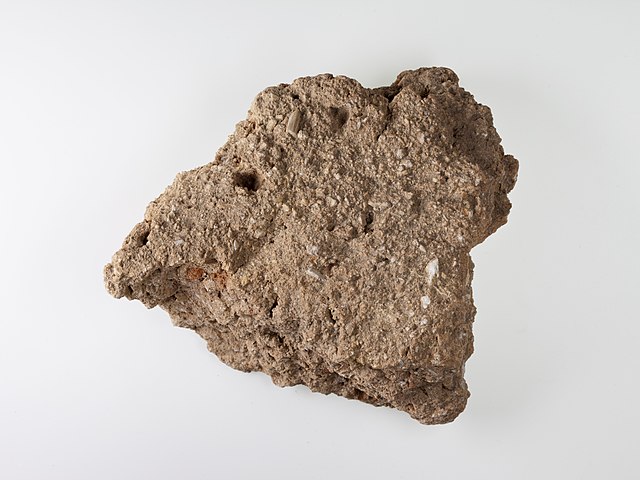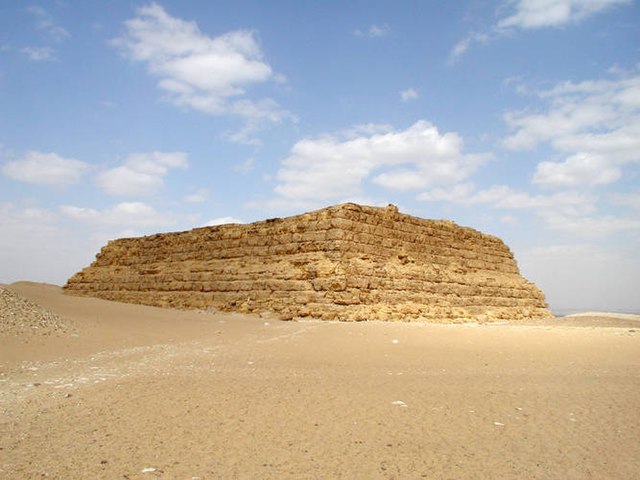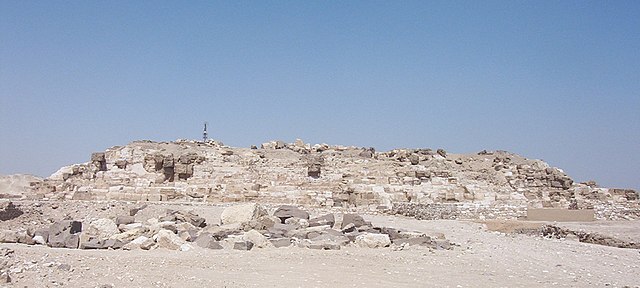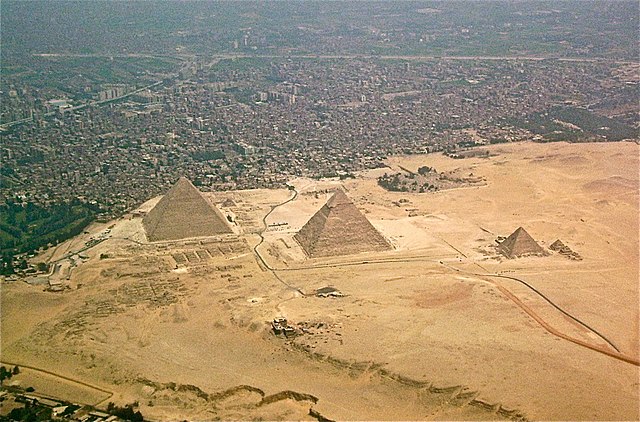The Great Pyramid of Giza is the largest Egyptian pyramid. It served as the tomb of pharaoh Khufu, who ruled during the Fourth Dynasty of the Old Kingdom. Built c. 2600 BC, over a period of about 27 years, the pyramid is the oldest of the Seven Wonders of the Ancient World, and the only wonder that has remained largely intact. It is the most famous monument of the Giza pyramid complex, which is part of the UNESCO World Heritage Site "Memphis and its Necropolis". It is situated at the northeastern end of the line of the three main pyramids at Giza.
The Great Pyramid in March 2005
Clay seal bearing the name of Khufu from the Great Pyramid on display at the Louvre museum
Khufu's cartouche found inscribed on a backing stone of the pyramid
Specimen of mortar from between core blocks of the Great Pyramid
The Egyptian pyramids are ancient masonry structures located in Egypt. Sources cite at least 118 identified "Egyptian" pyramids. Approximately 80 pyramids were built within the Kingdom of Kush, now located in the modern country of Sudan. Of those located in modern Egypt, most were built as tombs for the country's pharaohs and their consorts during the Old and Middle Kingdom periods.
A view of the Giza pyramid complex from the plateau to the south of the complex. From left to right, the three largest are: the Pyramid of Menkaure, the Pyramid of Khafre and the Great Pyramid of Giza. The three smaller pyramids in the foreground are subsidiary structures associated with Menkaure's pyramid.
The Mastabat al-Fir’aun at Saqqara
The largely destroyed Pyramid of Djedefre
Aerial view of the Giza pyramid complex








